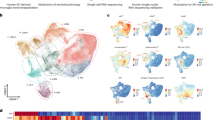Abstract
Cell-replacement therapy and tissue regeneration using stem cells are of great interest to recover histological damage caused by neuro-degenerative disease or traumatic insults to the brain. To date, the main intra-cerebral delivery for these cells has been as a suspension in media through a thin needle. However, this does not provide cells with a support system that would allow tissue regeneration. Scaffold particles are needed to provide structural support to cells to form de novo tissue. In this 16-d protocol, we describe the generation and functionalization of poly (D,L-lactic-co-glycolic) acid (PLGA) particles to enhance cell attachment, the attachment procedure to avoid clumping and aggregation of cells and particles, and their preparation for intra-cerebral injection through a thin needle. Although the stem cell–scaffold transplantation is more complicated and labor-intensive than cell suspensions, it affords de novo tissue generation inside the brain and hence provides a significant step forward in traumatic brain repair.
This is a preview of subscription content, access via your institution
Access options
Subscribe to this journal
Receive 12 print issues and online access
$259.00 per year
only $21.58 per issue
Buy this article
- Purchase on Springer Link
- Instant access to full article PDF
Prices may be subject to local taxes which are calculated during checkout







Similar content being viewed by others
References
Bjorklund, A. & Lindvall, O. Cell replacement therapies for central nervous system disorders. Nat. Neurosci. 3, 537–544 (2000).
Aebischer, P., Tresco, P.A., Winn, S.R., Greene, L.A. & Jaeger, C.B. Long-term cross-species brain transplantation of a polymer-encapsulated dopamine-secreting cell line. Exp. Neurol. 111, 269–275 (1991).
Aebischer, P., Wahlberg, L., Tresco, P.A. & Winn, S.R. Macroencapsulation of dopamine-secreting cells by coextrusion with an organic polymer solution. Biomaterials 12, 50–56 (1991).
Lavik, E.B., Klassen, H., Warfvinge, K., Langer, R. & Young, M.J. Fabrication of degradable polymer scaffolds to direct the integration and differentiation of retinal progenitors. Biomaterials 26, 3187–3196 (2005).
Park, K.I., Teng, Y.D. & Snyder, E.Y. The injured brain interacts reciprocally with neural stem cells supported by scaffolds to reconstitute lost tissue. Nat. Biotechnol. 20, 1111–1117 (2002).
Tomita, M. et al. Biodegradable polymer composite grafts promote the survival and differentiation of retinal progenitor cells. Stem Cells 23, 1579–1588 (2005).
Bible, E. et al. The support of neural stem cells transplanted into stroke-induced brain cavities by PLGA particles. Biomaterials 30, 2985–2994 (2009).
Hejcl, A. et al. Biocompatible hydrogels in spinal cord injury repair. Physiol. Res. 57 (Suppl 3): S121–132 (2008).
Teng, Y.D. et al. Functional recovery following traumatic spinal cord injury mediated by a unique polymer scaffold seeded with neural stem cells. Proc. Natl. Acad. Sci. USA 99, 3024–3029 (2002).
Sinden, J.D. et al. Recovery of spatial learning by grafts of a conditionally immortalized hippocampal neuroepithelial cell line into the ischaemia-lesioned hippocampus. Neuroscience 81, 599–608 (1997).
Modo, M., Stroemer, R.P., Tang, E., Patel, S. & Hodges, H. Effects of implantation site of dead stem cells in rats with stroke damage. Neuroreport 14, 39–42 (2003).
Modo, M. et al. Neurological sequelae and long-term behavioural assessment of rats with transient middle cerebral artery occlusion. J. Neurosci. Methods 104, 99–109 (2000).
Modo, M., Stroemer, R.P., Tang, E., Patel, S. & Hodges, H. Effects of implantation site of stem cell grafts on behavioral recovery from stroke damage. Stroke 33, 2270–2278 (2002).
Paxinos, G. & Watson, C. The Rat Brain in Stereotaxic Coordinates 6th edn. (Elsevier, Amsterdam, NL, 2007).
Zelzer, M. et al. Investigation of cell-surface interactions using chemical gradients formed from plasma polymers. Biomaterials 29, 172–184 (2008).
Acknowledgements
This work was supported by a BBSRC project grant (BB/D014808/1), NIBIB Quantum Grant (1 P20 EB007076-01), EU FP VII (201842-ENCITE) and the generous support by the Charles Wolfson Charitable Trust Foundation. We would like to thank Dr. Natalia Gorenkova for assisting with the transplantations and Dr. Mieke Heyde for generating early versions of the PLGA particles. M.M. is the recipient of a RCUK fellowship.
Author information
Authors and Affiliations
Contributions
E.B.: design of experiments, cell culturing, transplantation, MRI, histology, drafting of manuscript, final approval of manuscript; D.Y.S.C.: design of experiments, microparticle generation and characterization, drafting of manuscript, final approval of manuscript; M.R.A.: plasma polymerization, final approval of manuscript; J.P.: design of experiments, funding, final approval of manuscript; K.M.S.: design of experiments, funding, final approval of manuscript; M.M.: design of experiments, funding, drafting of manuscript, final approval of manuscript.
Corresponding author
Ethics declarations
Competing interests
The authors declare competing financial interests. Kevin Shakesheff is CSO of Regentec. Jack Price is a consultant to ReNeuron Ltd.
Supplementary information
Supplementary Fig. 1
In-house developed plasma polymerization reactor. (A) Photograph of plasma polymerization reactor including key valves and control units. The plasma reactor consists of T-shaped borosilicate chamber, enclosed within stainless steel endplates and sealed with Viton O-rings. (B) Photograph of plasma polymerization reactor in action coating a sample. The pink/purple discharge is characteristic of the plasma formed from allylamine. (PDF 494 kb)
Rights and permissions
About this article
Cite this article
Bible, E., Chau, D., Alexander, M. et al. Attachment of stem cells to scaffold particles for intra-cerebral transplantation. Nat Protoc 4, 1440–1453 (2009). https://doi.org/10.1038/nprot.2009.156
Published:
Issue Date:
DOI: https://doi.org/10.1038/nprot.2009.156
This article is cited by
-
Application of plasma polymerized pyrrole nanoparticles to prevent or reduce de-differentiation of adult rat ventricular cardiomyocytes
Journal of Materials Science: Materials in Medicine (2021)
-
Translational considerations in injectable cell-based therapeutics for neurological applications: concepts, progress and challenges
npj Regenerative Medicine (2017)
-
Wrinkling Non-Spherical Particles and Its Application in Cell Attachment Promotion
Scientific Reports (2016)
-
Hybrid microscaffold-based 3D bioprinting of multi-cellular constructs with high compressive strength: A new biofabrication strategy
Scientific Reports (2016)
-
Gaining Mechanistic Insights into Cell Therapy Using Magnetic Resonance Imaging
Current Stem Cell Reports (2016)
Comments
By submitting a comment you agree to abide by our Terms and Community Guidelines. If you find something abusive or that does not comply with our terms or guidelines please flag it as inappropriate.



